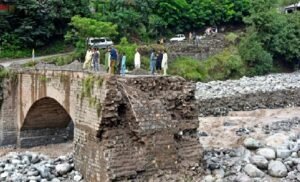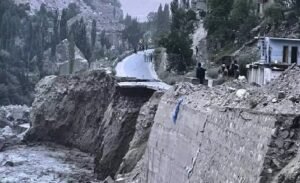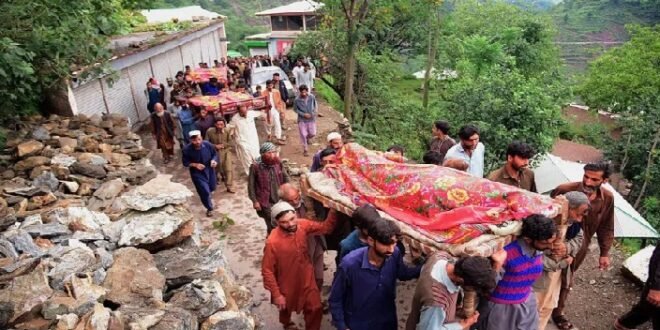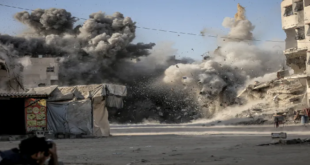17-08-2025
Bureau Report + Agencies
PESHAWAR/ BUNER: The death toll from heavy monsoon floods and landslides in Pakistan and Pakistan-administered Kashmir continues to rise rapidly, with at least 410 people confirmed dead.
Most of the deaths were recorded by disaster authorities in the mountainous Khyber Pakhtunkhwa province in north-west Pakistan. At least 74 homes have been damaged, while a rescue helicopter crashed during operations, killing its five crew.
 Nine were killed in Pakistan-administered Kashmir, while another five died in the northern Gilgit-Baltistan region, authorities said.
Nine were killed in Pakistan-administered Kashmir, while another five died in the northern Gilgit-Baltistan region, authorities said.
Government forecasters said heavy rainfall was expected until 21 August in the north-west of the country, where several areas have been declared disaster zones.
In Buner, one survivor told media the floods arrived like “doomsday”.
“I heard a loud noise as if the mountain was sliding. I rushed outside and saw the entire area shaking, like it was the end of the world,” said Azizullah.
“The ground was trembling due to the force of the water, and it felt like death was staring me in the face.”
The chief minister of Khyber Pakhtunkhwa, Ali Amin Gadapur, said that the M-17 helicopter crashed due to bad weather while flying to Bajaur, a region bordering Afghanistan.
In Bajaur, a crowd amassed around an excavator trawling a mud-soaked hill, media photos showed. Funeral prayers began in a paddock nearby, with people grieving in front of several bodies covered by blankets.
Khyber Pakhtunkhwa has declared a day of mourning.
In the Indian-administered part of Kashmir, rescuers pulled bodies from mud and rubble on Friday after a flood crashed through a Himalayan village, killing at least 60 people and washing away dozens more.
Monsoon rains between June and September deliver about three-quarters of South Asia’s annual rainfall. Landslides and flooding are common and more than 300 people have died in this year’s season.
 In July, Punjab, home to nearly half of Pakistan’s 255 million people, recorded 73% more rainfall than the previous year and more deaths than in the entire previous monsoon.
In July, Punjab, home to nearly half of Pakistan’s 255 million people, recorded 73% more rainfall than the previous year and more deaths than in the entire previous monsoon.
Scientists say that climate change has made weather events more extreme and more frequent.
Northern Pakistan is also one of the most glaciated areas in the region but they are fast thinning and retreating because of global warming, meaning debris such as rocks, soil, and other materials are vulnerable to being dislodged.
Monsoon rains now further destabilize the mountains, resulting in landslides.
While the exact cause of the recent floods and landslides are yet to be determined, glaciologists say that ice melt is a contributing factor.
Meanwhile, at least 60 people have been killed and dozens are still missing after flash floods hit a village hosting Hindu pilgrims in Indian-administered Kashmir.
More than 100 people have been injured, said Jammu and Kashmir Chief Minister Omar Abdullah while addressing an Independence Day function in capital Srinagar.
On Thursday, water mixed with debris and mud came gushing down a hill in Chositi village in Kishtwar district, a remote village on a busy pilgrimage route to a Himalayan shrine. Rescue operations are continuing as officials intensify efforts to pull out survivors from the mud and rubble.
Officials say the flooding was likely triggered by a cloudburst, though India’s meteorological department is yet to confirm this.
 Pressmediaofindia
Pressmediaofindia




